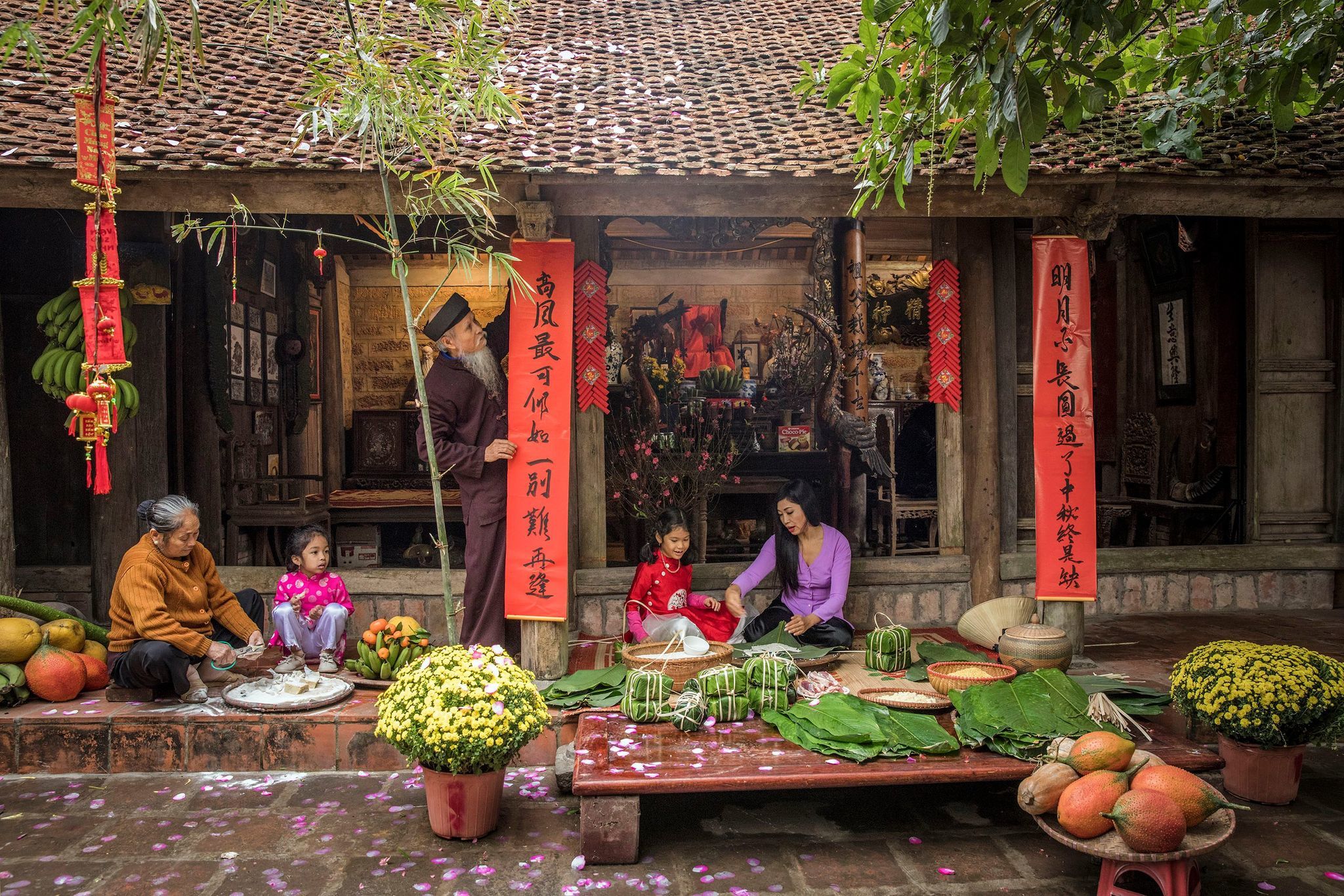Different people, different identity! That is also true in Vietnam – a community of 54 ethnic groups. Each of 54 ethnic groups in Vietnam has its distinct custom with many different traditional liturgies. But, they all contribute to a diverse customs of a big family – Vietnamese nation.
Among variety of traditional liturgies, ancestor worship is one of the most long-standing liturgies in Vietnam. In Vietnamese people’s point of view, death is just physical; souls of the dead still exist and follow their children. By practicing liturgy of worship, living people express respect to their ancestor. In the house of Vietnamese people, it’s easy to see an ancestor altar as it’s usually arranged right in the middle of the house and is the most solemn place. On 1st and 15th of every lunar month, Vietnamese people incense to pray for their dead parents or grandparents and wish their ancestor could bless them with health and lucky. Moreover, Vietnamese people also worship their ancestor in important occasions such as New Year’s Day, the dead day of the ancestor, celebration of new house, the day a baby born, etc. In the last day of a year, Vietnamese always visit ancestor’s graves to incense and invite their ancestor to come back home and welcome a new year with family.
Besides, funeral ceremony is also a solemn traditional liturgy in Vietnam. Funeral ceremony in Vietnam has been influenced by Buddhism and Confucianism for a long period in history. This is also the occasion that children do the final filial duty for their parent or grandparent, who is at the last moment of lifetime. The dead body will be washed and dressed new clothes. Monks are invited to the house to hold funeral rites and pray for soul of the dead person will rest in peace. After the rites, the dead body will be put into a coffin. Children, grandchildren, relatives, friends and neighbors of the dead will visit him/her in sadness for the last time before procession rite takes place to bring him/her to the final resting place. One year later, all members of family, friends of the dead and neighbors will gather to remember the dead day of the person that has gone away.
About wedding ceremony, after a betrothal ceremony which was held sometime before, wedding ceremony takes place. At the beginning of the ceremony, groom’s family and relatives come to bride’s house with many wedding presents. They will be welcomed by representatives of bride’s family. Then, representative of groom’s family will politely ask bride’s family if they allow groom to get married with his bride. After having the permission, master of the wedding ceremony will pronounce groom and bride become husband and wife. Parents of bride will remind her about responsibility of a wife before she gets in marriage. Then, both bride and groom will receive gifts (like golden bracelets, ear rings, necklace, etc.) from their parents. Guests who are invited to wedding ceremony will give some money to just-married couple as congratulation and best wishes for their happiness. A wedding party is also held with participant of many people. At modern wedding ceremonies, brides usually wear wedding dress and grooms wear suit instead of traditional costume of “ao dai”. The rite of exchanging wedding rings is also performed at the ceremony.

